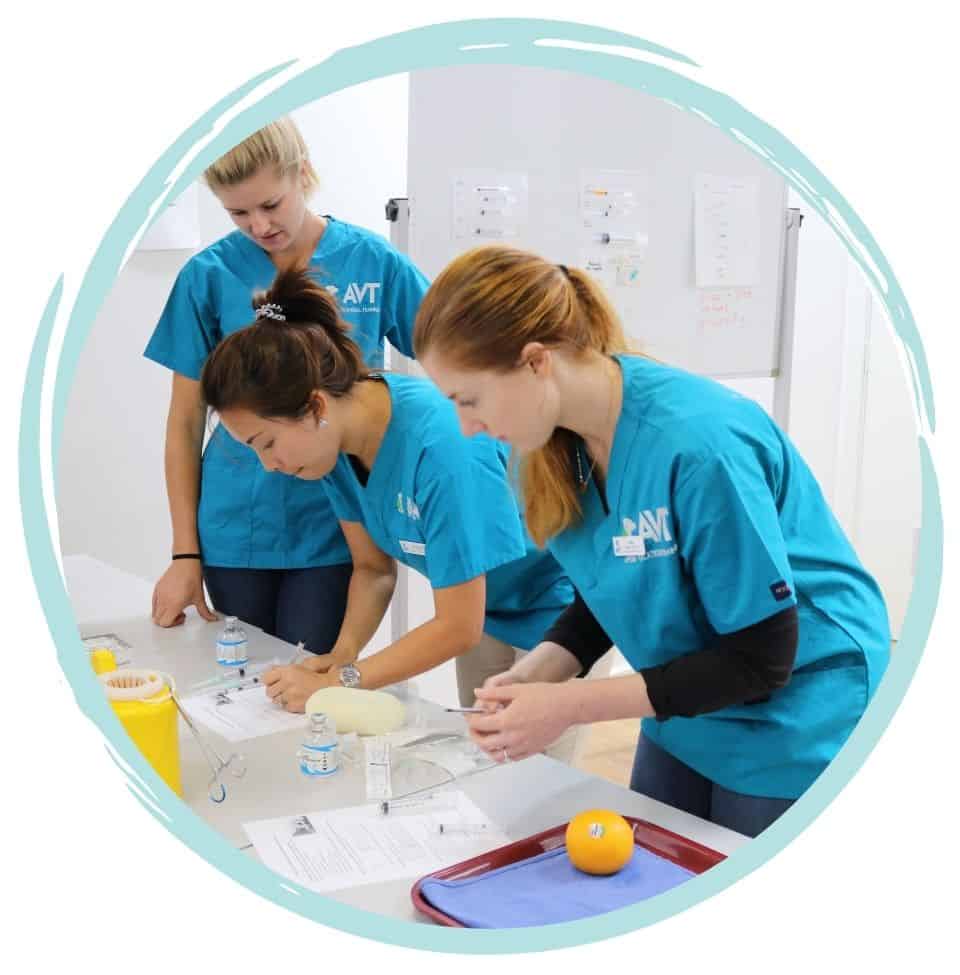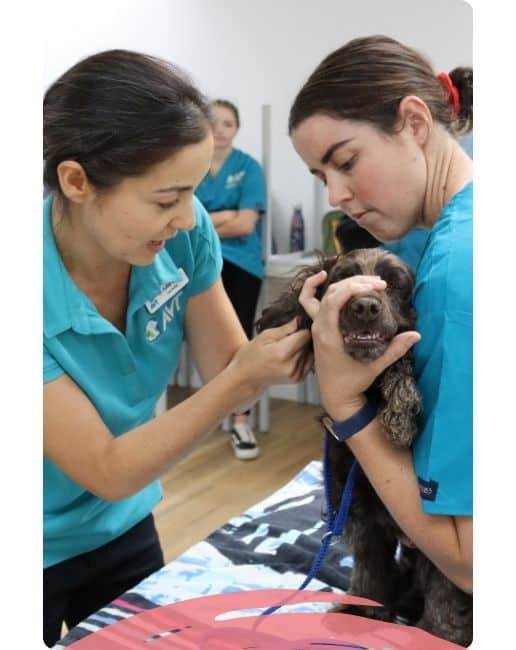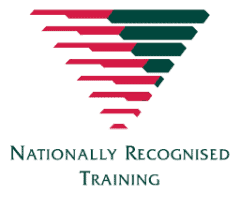Essential Requirements
Throughout this course, you will need to demonstrate the ability to:
- Communicate appropriately and effectively with people from a variety of ages and backgrounds, including veterinary professionals, clients (pet owners), peers, and Trainers and Assessors. This includes perceiving, interpreting, and responding to non-verbal cues to ensure sensitive and respectful communication
- Comprehend spoken English at conversational speed, including in noisy environments
- Read and understand information presented in various formats in English, and accurately complete written assessments and records
- Retain and recall essential information accurately
- Follow written and verbal instructions precisely
- Complete workplace documentation using industry-specific terminology
- Wear Personal Protective Equipment (PPE) as required
- Work safely in a veterinary hospital (or similar facility), handling and caring for a range of animal species while following all WHS precautions
Environmental Requirements
In this course, you will be expected to:
For on-campus study mode only
- Attend theory classes (maximum of 30 students) one day per week for the duration of the course
- Communicate effectively with your peers, Trainers and Assessors and the veterinary team in your work placement hospital
- Work collaboratively within a team as well as independently
- Participate in group activities and practical assessments using both verbal and non-verbal communication skills
For on-campus, blended and online study modes
During your workplace training in a veterinary hospital, you will be expected to:
- Follow instructions carefully and relay accurate information to others
- Demonstrate an understanding of the level of care and responsibility required when working with patients
- Adhere to strict hygiene and WHS protocols to protect animal health and wellbeing. This may involve handling chemicals and animal waste such as urine, faeces, uneaten food, blood and soiled bedding
- Be physically capable of manual work, including lifting equipment, restraining animals, bending and standing for extended periods
- Work closely with a team of veterinary professionals
- Communicate confidently and respectfully with hospital staff and clients (pet owners)
- Remain calm and professional when working in emotionally challenging, high-pressure or stressful situations
- Recognise your own competency and limitations to ensure the safety of patients, clients and team members
Assessment Types
You will be assessed on your skills and knowledge in various ways, including:
- Written answers, online assessments and timed tests, case studies, multiple choice questions, presentations, verbal questioning, workplace assignments and practical tasks














